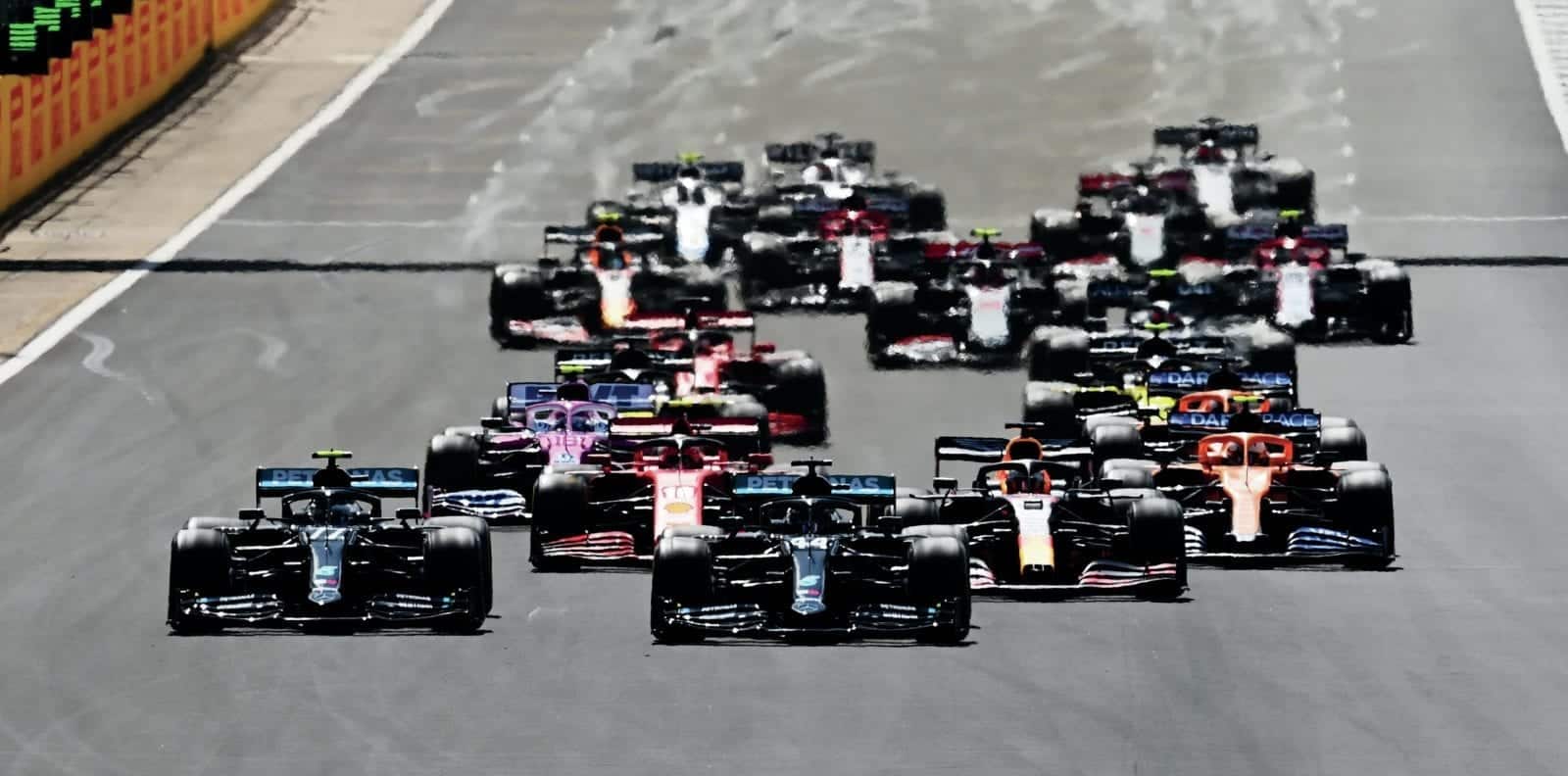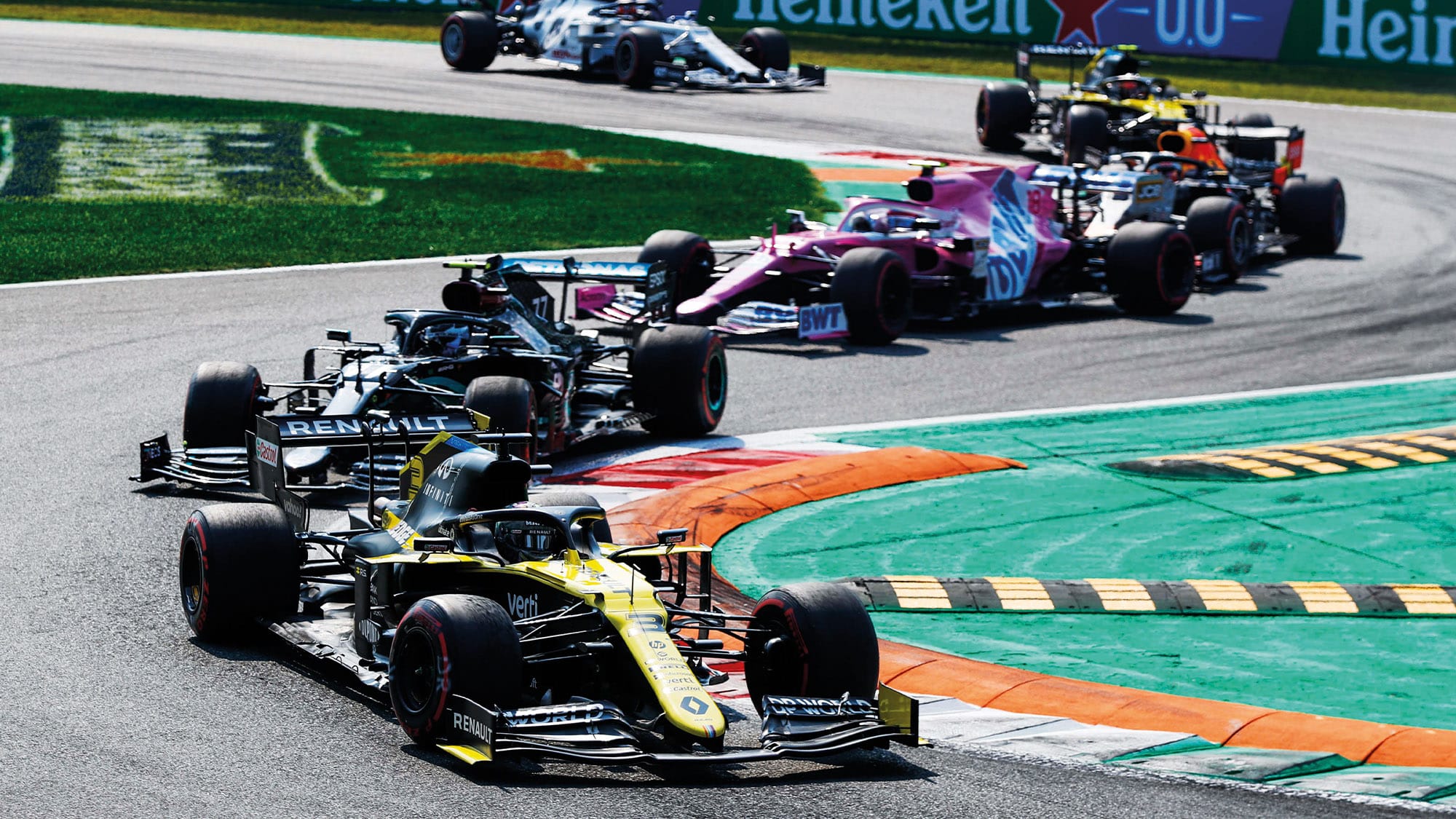F1's new sprint qualifying race: short, sharp and unpredictable
F1’s new sprint qualifying format will come to life at Silverstone. Here’s all you need to know

Formula 1 will hold its first sprint race at the British Grand Prix in July, and if the two-lap blast at Baku is anything to go by, they could well add extra spice to a race weekend. The format has been agreed upon by teams and aims to add extra on-track action to a race weekend with an additional shorter race.
Officially called sprint qualifying, it will slot into Saturday and provide an extra race that will set the grid for the main grand prix on Sunday.
The format will make two more appearances in 2021, believed to be at the Italian and Brazilian grands prix — assuming they both take place amid Covid restrictions, but how exactly will the new sprint races work?
Here is a rundown of the rules and regulations of the F1 sprint races, including format, points and race dates.
What is a sprint race?
Sprint races will add a new factor to the traditional Practice, Qualifying, Race format. They will be trialled this year to set the grid for the grand prix, in an effort to increase on-track action.
While the format F1 will use isn’t quite the same as those used in Formula 2 and 3, the intention is similar, which is to mix up the grid and provide more ‘bang for your buck’ racing.
The races will be shorter than the usual format and, while the winner will be awarded some championship points, the race’s key role will be to establish the grid for Sunday’s full-length race.
How will the races work?
The sprint races will not be full-length grand prix distances. Instead, they will run to 100km (62 miles), as opposed to the full 306.2km of the British GP.
Qualifying will take place a day earlier than usual, on the Friday of the race weekend, and the results from that will set the grid for the sprint race on Saturday. The results of the sprint race itself will then set the grid for Sunday’s grand prix, which will still award full points and run to the usual distance and lap count.
Only the top three finishers in the sprint race will be awarded points. The sprint race winner will receive three championship points, the runner-up gets two and third place earns a single point, so there is some extra incentive to push on at the start of the weekend.
Parc fermé restrictions will now come into effect on Friday ahead of qualifying, instead of Saturday as it would on a normal weekend. This will prevent teams from setting up their cars specifically to take advantage of the new format.
They’re “designed to increase the on-track action and engage fans in a new and innovative way”, according to F1’s commercial rights holder, Liberty Media.
How many laps is a sprint race?
The sprint races run to 100km so, depending on the circuit F1 is using on a sprint race weekend, the lap count will vary. For the British Grand Prix at Silverstone, the race will last 17 laps, but if Interlagos hosts a sprint race later in the season, the sprint will last for 24 laps due to the shorter lap distance of the Brazilian track.
When will the F1 sprint races happen?
There are currently three sprint races planned to take place during the season, and Silverstone’s one on Saturday July 17 is so far the only date and venue set in stone. The subsequent dates are yet to be confirmed, but it is expected that both Monza and Interlagos could also host the new format later in the season.
Of course, due to the unpredictable nature of the world at the moment there are question marks over both races amid the pandemic, meaning plans for the other two sprint races could well move about a fair bit between now and Brazil’s scheduled late-season slot in November.
British GP sprint race
The sprint race at Silverstone will be held on the same layout as the actual grand prix on Sunday. It should last around 30-45 minutes, assuming no safety car or red flag delays, but there won’t be a podium ceremony as that honour remains exclusive to the main race on Sunday.
As with a normal grand prix, drivers will start the sprint on the tyres they completed their fastest time in Q2, should they make the final Q3 shoot-out session. They will then have free tyre choice for Sunday’s grand prix.

